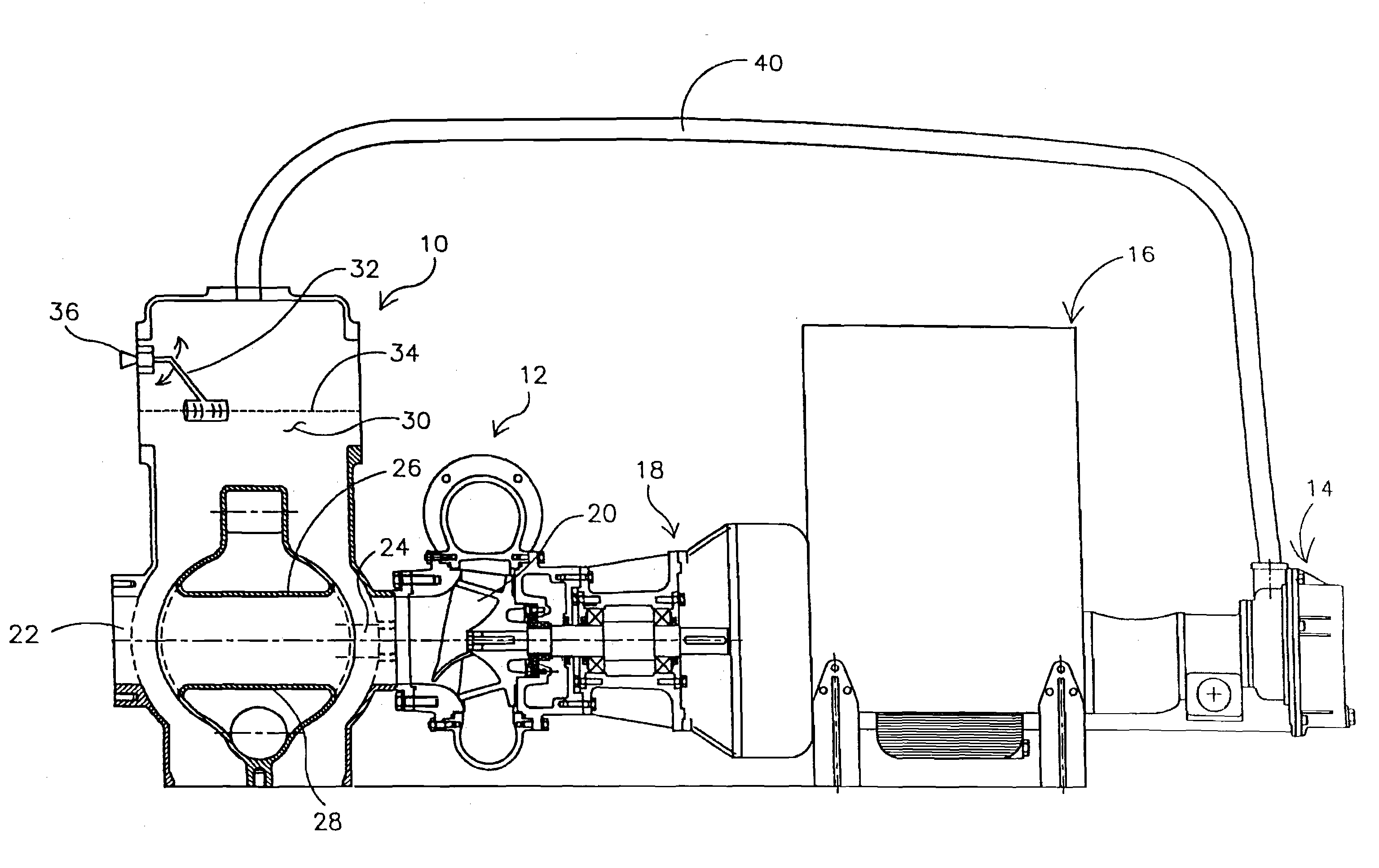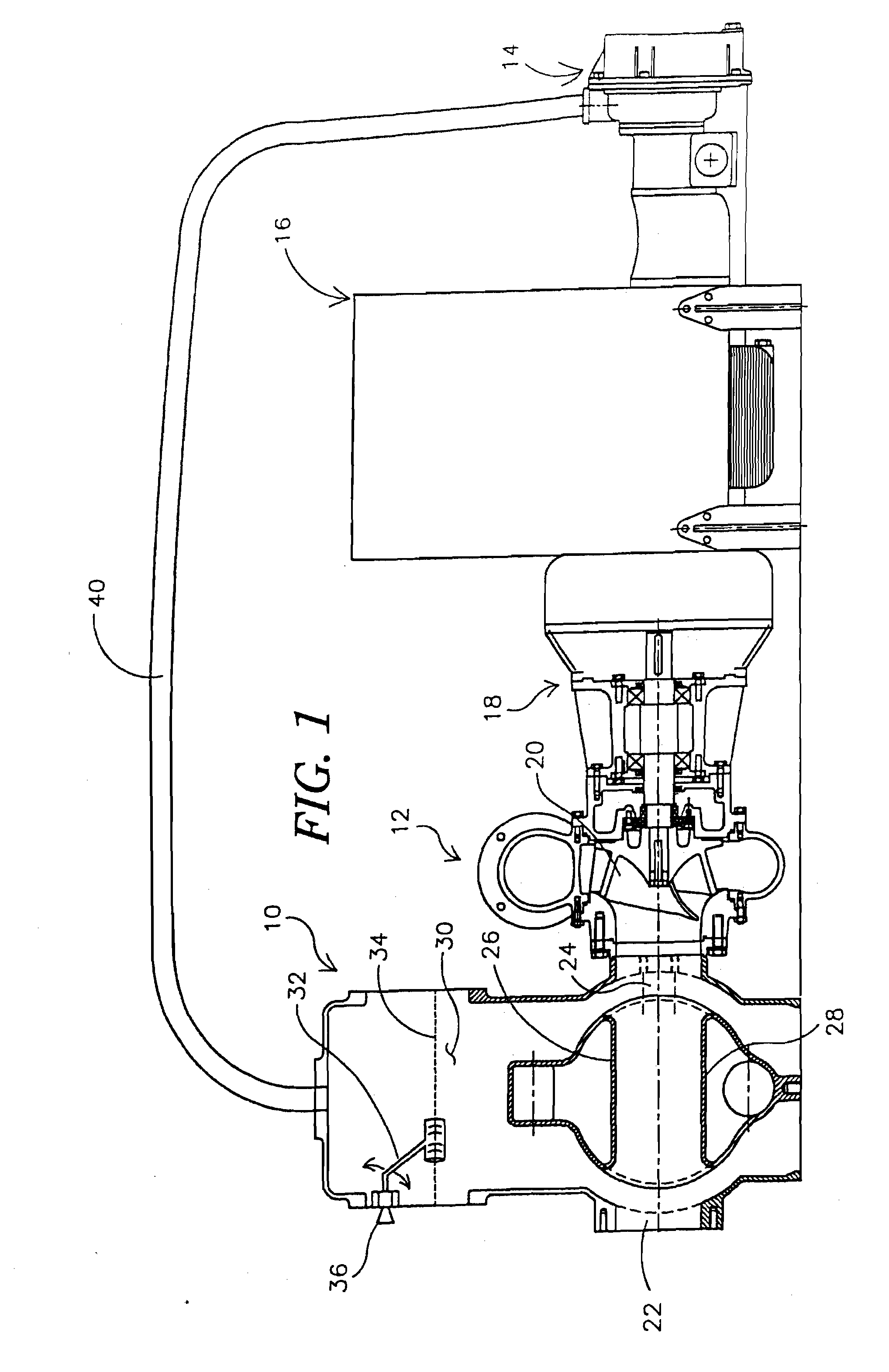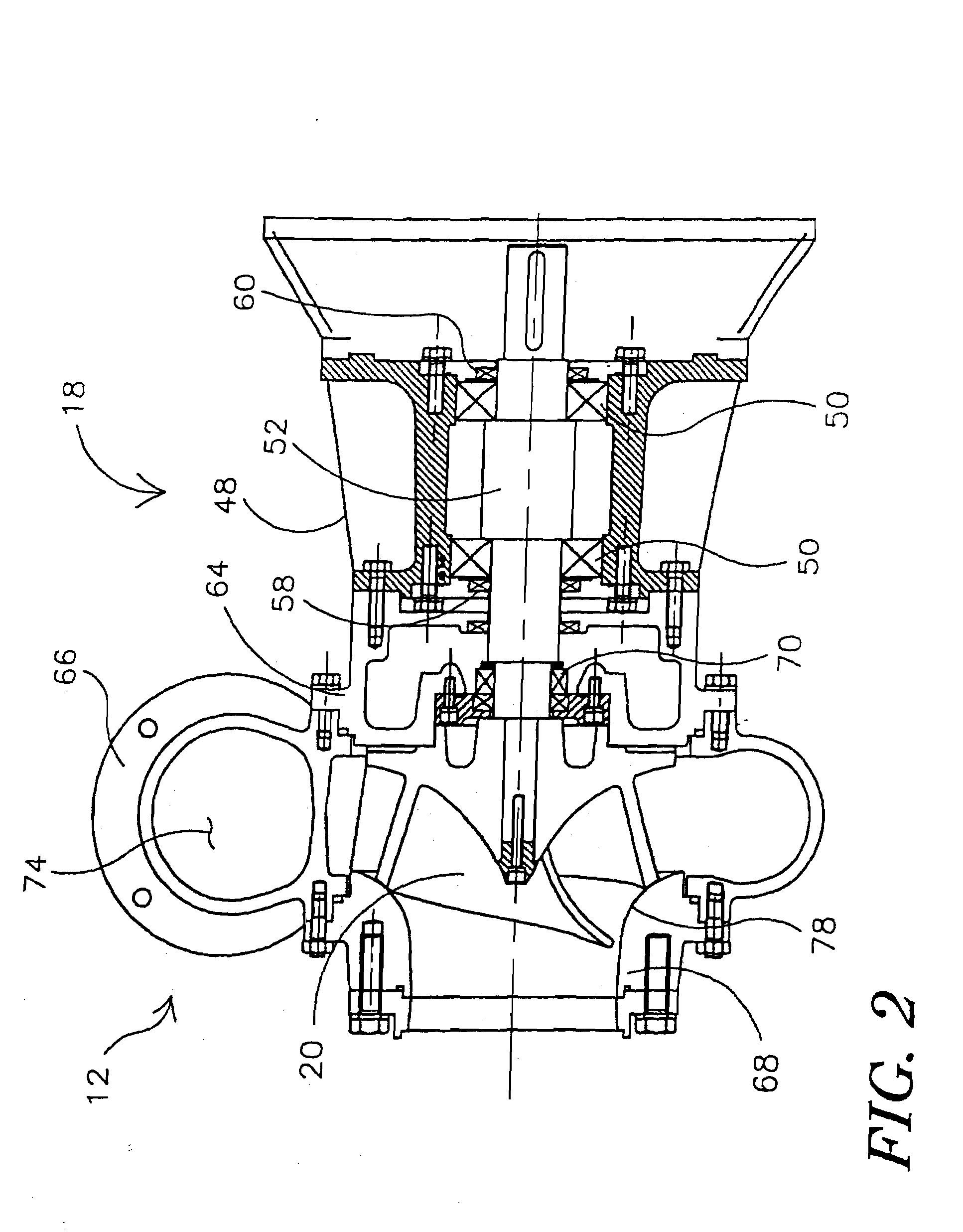Pump system with vacuum source
a pump system and vacuum pump technology, applied in the field of pumps, can solve the problems of reducing affecting causing the fluid inside the reservoir to splash, mist, or otherwise enter the inlet, so as to reduce the reliability of the system, increase the distance, and reduce the effect of reliability
- Summary
- Abstract
- Description
- Claims
- Application Information
AI Technical Summary
Benefits of technology
Problems solved by technology
Method used
Image
Examples
Embodiment Construction
[0051] The following detailed description should be read with reference to the drawings, in which like elements in different drawings are numbered in like fashion. The drawings which are not necessarily to scale, depict selected embodiments and are not intended to limit the scope of the invention. In some cases, the drawings may be highly diagrammatic in nature. Examples of constructions, materials, dimensions, and manufacturing processes are provided for various elements. Those skilled in the art will recognize that many of the examples provided have suitable alternatives which may be utilized.
[0052] The present invention provides an improved pump assembly and related components. The improved pump assembly is generally shown in FIG. 1 and includes a separator 10, a centrifugal primary pump assembly 12, a liquid ring vacuum pump 14 and a motor 16.
[0053] The separator 10 includes an intake port 22 and an output port 24. The intake port 22 is the input port for the pump. The intake ...
PUM
| Property | Measurement | Unit |
|---|---|---|
| pressure | aaaaa | aaaaa |
| width | aaaaa | aaaaa |
| width | aaaaa | aaaaa |
Abstract
Description
Claims
Application Information
 Login to View More
Login to View More - R&D
- Intellectual Property
- Life Sciences
- Materials
- Tech Scout
- Unparalleled Data Quality
- Higher Quality Content
- 60% Fewer Hallucinations
Browse by: Latest US Patents, China's latest patents, Technical Efficacy Thesaurus, Application Domain, Technology Topic, Popular Technical Reports.
© 2025 PatSnap. All rights reserved.Legal|Privacy policy|Modern Slavery Act Transparency Statement|Sitemap|About US| Contact US: help@patsnap.com



